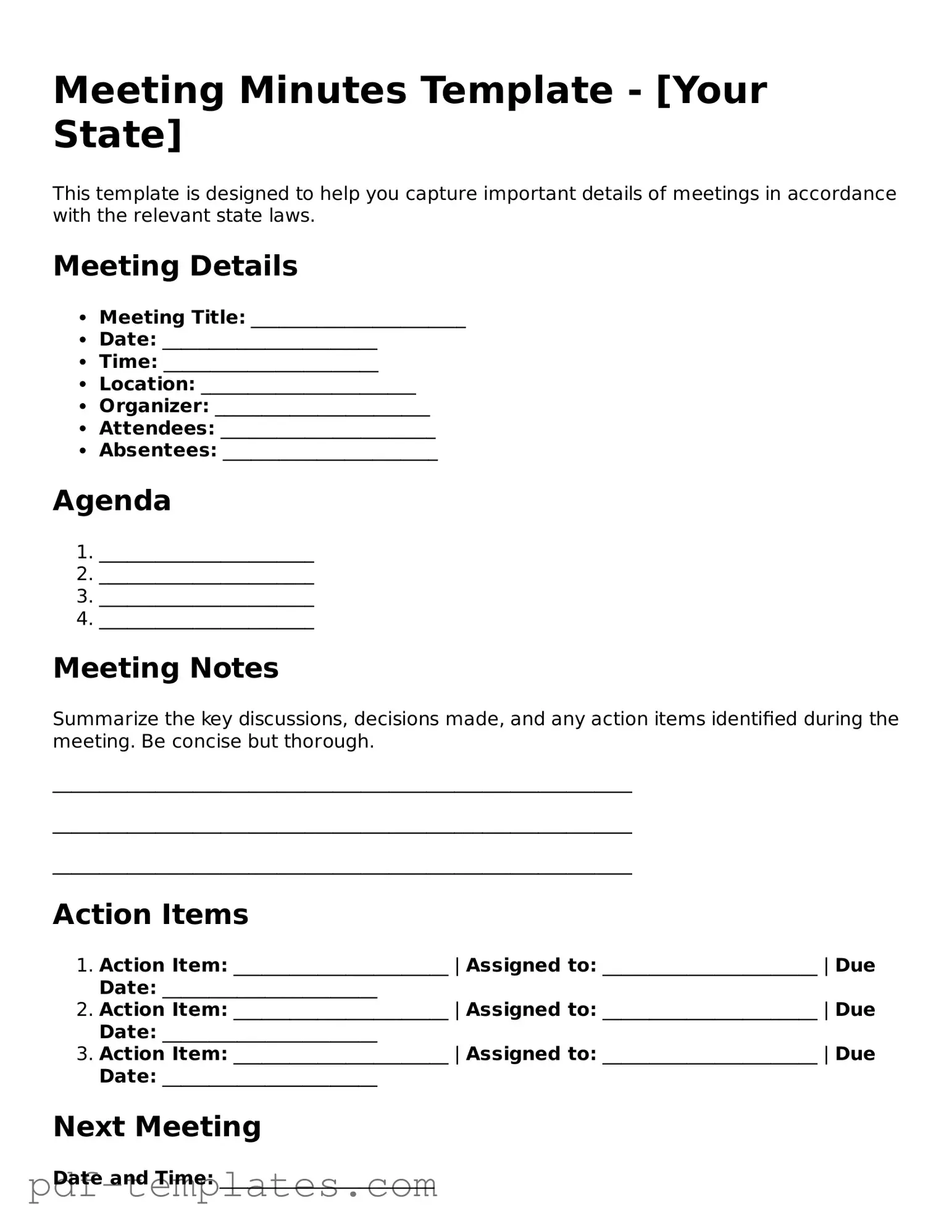The Meeting Agenda is a document that outlines the topics to be discussed during a meeting. It serves as a roadmap for participants, ensuring that everyone is prepared and focused on the key issues. Like meeting minutes, the agenda is typically distributed to attendees in advance. Both documents aim to enhance communication and efficiency, but while the agenda sets the stage for discussion, meeting minutes capture what actually occurred during the meeting.
Another similar document is the Action Items List. This list details the tasks assigned during a meeting, including who is responsible for each task and the deadlines for completion. Both action items and meeting minutes serve as tools for accountability. However, while meeting minutes provide a comprehensive overview of the discussion, the action items list zeroes in on specific follow-up tasks that need to be addressed after the meeting.
The General Bill of Sale is a legal document used to transfer ownership of personal property from one individual to another. This form serves as a record of the transaction, detailing the item being sold, the purchase price, and the parties involved. By utilizing this form, both the buyer and seller can ensure clarity and protection in the sale agreement. For more information, you can visit https://documentonline.org/blank-general-bill-of-sale/.
Meeting Summaries also share similarities with meeting minutes. A summary distills the key points and decisions made during a meeting into a concise format. Both documents aim to inform participants who were present and those who were not. However, meeting minutes tend to be more detailed, capturing the full context of discussions, whereas summaries focus on the highlights and main takeaways.
Board Resolutions are another document that aligns closely with meeting minutes. These resolutions record formal decisions made by a board or committee during a meeting. Both documents serve as official records of what transpired. However, board resolutions are typically more formal and legally binding, whereas meeting minutes serve a broader purpose of documenting the dialogue and decisions without the same level of formality.
Lastly, the Attendance Sheet is a document that tracks who was present at a meeting. It complements meeting minutes by providing a record of participants, which is essential for accountability and future reference. While meeting minutes document the discussions and decisions made, the attendance sheet focuses solely on the people involved. Together, they provide a comprehensive overview of the meeting's proceedings.
